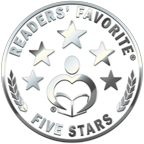I have to admit upfront that a lot of the storage space in my brain is devoted to “extra verses of traditional Christmas carols.” I love folk songs, and holiday ones are no exception. One of my favorites is “The Holly and the Ivy.”
The holly and the ivy,
When they are both full grown,
Of all the trees that live in the wood
The holly bears the crown.
The rising of the sun,
And the running of the deer,
The playing of the merry organ
Sweet singing in the choir.
If you’re not familiar with the song, the next verses go into the symbolism of the holly in Christian thought (white holly blossom to the purity of the baby Jesus, and so on). The first verse and the chorus (above) both read like someone listing things they like. It comes across as kind of random, but I like those things too, so I’m okay with it. 🙂
Still, given the symbolism in the later verses, I’ve always thought there must be a story behind the rest of the song. However when I looked into it, I found very little — the song itself is not very old (for a folk song); it’s recorded as showing up in hymnals in the mid 1800s. However, the association of holly and ivy together — and of holly in particular with Christmas — go back at least to medieval times.
European Holly is evergreen, and therefore still nice and colorful at Christmastime. (But yes, there are different kinds of holly, and most native to North America are deciduous!) Across the UK, holly was used in churches but also in pagan celebrations of Yule. It’s also celebrated in the Sans Day Carol, aka The Holly Bears a Berry, which is very similar to The Holly and the Ivy, but a little more focused:
Now the holly bears a berry as white as the milk,
And Mary she bore Jesus all wrapped up in silk.
And Mary, she bore Jesus, our Savior for to be,
And the first tree that’s in the green wood, it was the holly.
As a sidenote, I have to say that I like this chorus (. . . and the first tree that’s in the green wood, it was the holly) because it makes me think of ecology. I’m not sure if this idea about holly being “first” has to do with it being a pioneer species of sorts (first to grow in a disturbed — e.g. logged — area) or the fact that some hollies are evergreen, and therefore first to be green; or maybe “first” was thrown in for some other whim. But I like wondering about it.
And what about ivy? Well, supposedly in The Holly and The Ivy, the holly represents Jesus and the ivy represents Mary. (And then ivy is only mentioned in one line in the song. ::sigh::) Truthfully, holly and ivy do have a long history of being paired, with holly representing the masculine side and ivy the feminine. This is another association that shows up both in Christian and in pagan traditions. And it doesn’t work out well for ivy very often. One folk song — not a holiday song, just a bit of fun — compared holly and ivy as a thinly veiled “here’s why men are better than women” lesson:
Holly and his merry men, they dance and they sing,
Ivy and her maidens, they weep and they wring.
The song goes on to list great birds that like holly — including the nightingale, apparently — and then says “Good ivy, what birds hast thou?/None but the owlet that cries how, how.” I’m sorry, did I say the song was thinly veiled? Try not veiled at all!
And to end on a traditional note (that is, traditional for these Fun Friday posts!), both holly and ivy are mildly toxic. Particularly to pets! So have fun decorating your home with greens for the season, but do be careful about where you put them. 😉
Selected Sources
For today, I did use Cunningham’s Encyclopedia of Magical Herbs, but most of the relevant information I found online. For song lyrics, check out Wikipedia’s pages on The Holly and the Ivy and the Sans Day Carol (just don’t cite those pages in your term papers 😉 ). I also found the Wandering Botanist’s blog helpful. And, of course, the ASPCA has all the info you need on toxicity!






3 Pingbacks